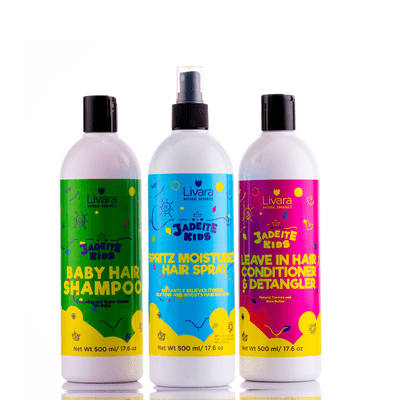- Support 24/7
- +1 (480) 468-4543
- livara@mylivara.com
Black History Month: The Rich History of Our African Hair

Livara Kids Products That Will Help You Manage Your Child’s Hair Better
February 6, 2023The Ultimate Guide To Preventing Dandruff For Good
February 8, 2023Happy Black History Month! Did you know that black hair has such a rich history in Africa? For centuries, African people have used various methods to style, care and maintain their hair.
For instance, in 15th century West Africa, hair was an identifier, it was a way to distinguish a person’s age, religion, rank, marital status and even family groups. Styles like dreadlocks are thought to have originated from Africa and were often used to represent social status. Since intricate braiding styles often took hours or even days to complete, it was a time of bonding and community between women.
Traditionally, women used natural oils like Shea butter to keep their hair healthy and moisturized, and also to make intricate styles like braids and locks. During slavery however, everything changed. As Africans were brought to the new world, their heads were often shaved for sanitary reasons. Africans not only lost their hair, but a part of their identity.
Though braids weren’t completely lost during slavery, many enslaved Africans started braiding their hair once again as a way to stay connected to their culture, and keep their hair neat and tidy while working on the plantations. Without the products and treatments typically used in Africa, Africans relied on bacon grease, butter and kerosene, instead of conditioners and shampoos.
Africans eventually used cornrows as a means of communication code. Seeds were hidden in the braids to grow crops as a means of survival for themselves.
As slavery ended, the black women in America opted for straight hair, conforming to a European standard of beauty. Straight hair was a perceived doorway to opportunity and black women with straight hair were considered better adjusted or more accepted by their white counterparts.
Back in Africa, Egyptians were some of the first people to wear wigs in 2700B.C. Ancient Egyptians shaved their heads, so wearing wigs prevented them from getting sunburned on their scalps. The wigs denoted rank, social status and religion.
They were made mostly of palm leaf fibers and sometimes, even human hair. Until the 1950s, wigs were made almost, entirely by hand. But after the invention of the machine made wig in Hong Kong, mass produced wigs flooded the market.
In Africa still, hairstyles remained as a form of self-expression, used to express identity. From cornrows to box braids, every hairstyle tells a story. Anytime you see an African hairstyle, you can be sure it is a part of a deep, long standing tradition.
Along with wigs, a number of hairstyles that exist today are of African origin. Come along with us as we explore the unique styles that came to us from the different parts of Africa.
- Fulani braids
Originating from the Fulani (Fula) people who are found in West Africa and the Sahel region of Africa. Most of the Fulani people come from countries like Senegal, Mali, Guinea and Cameroon.
Fulani women would decorate this hairstyle with beads and cowrie shells. They would also add silver coins and amber to the braids as ornaments. Hairstylists have since drawn inspiration from this and named the hairstyle after the Fulani people, creating the hairstyle we know and love today.
2. Edamburu
You may have seen this intricately braided coiffure from Beyonce’s movie, “Black Is King” or maybe you’ve not seen it before. This unique style is traditionally worn by the Mangbetu women of Congo. The hairstyle consists of thin braids weaved into an impressive structure designed to elongate your skull as is their traditional practice.
3. African threaded hair
Native to the Yoruba people of South Western Nigeria, threading hair is a common traditional hairstyle in most African societies. Hair threading has been around since the 15th century and is an effective way of length retention. In recent times, people have embraced this style to achieve a blowout without heat.
4. Dreadlocks
Women from the Himba tribe in Southwestern Namibia have been known to dreadlock their hair with a mixture of ground ochre, goat hair and butter. The dreadlocks are styled according to age, marital status and the stage of life they are in.
5. Bantu knots
Now embraced by a good number of us, Bantu knots originate from the Zulu people of South Africa. This hairstyle involves sectioning off of the hair, twisting it and wrapping it into a spiraled knots.
From fairy tales to movies to advertisements and music videos, our icons seem to always have long flowing hair. But this isn’t how our African hair grows.
For so long we’ve conformed to Western beauty standards instead of embracing our beautiful African hair. As we continue the course of Black History Month, we hope you’ll come to accept your rich history and beautiful culture through your natural hair. As the African gem you are, there’s all the reason to embrace this side of you.



